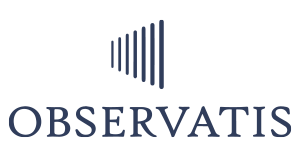A stitch in time saves nine—especially if you know where to stitch.
Don’t wait for engagement gaps to widen into exits. The Engagement Map surfaces where culture needs attention—before problems ripple outward.
See Where Your Organization Breathes
What if you could visualize your organization’s engagement like a weather map? Not a static survey result, but a real-time view of how your people feel, function, and fluctuate day by day. That’s exactly what the Engagement Map from Observatis provides.
More than just numbers, this tool delivers a dynamic organizational heatmap—revealing where energy is rising, stress is spiking, or disengagement is quietly taking root. It equips CHROs and People Leaders with the ability to anticipate and act, not just react.
Disengagement rarely happens all at once.
Traditional engagement strategies rely on quarterly or annual pulse surveys, often producing lagging data and surface-level feedback. Leaders only discover the problem after it becomes turnover. By then, it’s too late.
Disengagement rarely happens all at once. It builds gradually and spreads silently. And because the symptoms often look like “doing the job,” they’re easy to miss. That’s the danger—and the opportunity.
Let’s talk about it
Observatis’ patented ML-powered Engagement Map turns passive data into a living intelligence layer. It scans behavioral, cultural, and operational indicators across 10 dynamic engagement pillars—highlighting friction points, fatigue zones, and flight-risk pockets.
It doesn’t just show who is at risk—it shows where and why.
Features include:
Real-time organizational engagement heatmaps
Granular breakdown by department, tenure, and manager
Layered signals across Safety, Stress, Commitment, Support, Turnover Intention, and more
Automatic alerting and action recommendations based on risk scores
Why It Matters?
Think of your workforce like a complex ecosystem. When one area becomes depleted—morale, psychological safety, manager trust—the effects ripple outward.
The Engagement Map gives you a high-fidelity view of that ecosystem, enabling smart, sensitive interventions before the damage spreads.
By visualizing what’s working and what’s warning you, leaders can:
Address issues before they become exits
Coach managers where support is breaking down
Understand patterns across roles, regions, or cultures


Emerging Scientific Insights
A recent MIT Sloan study found that real-time sentiment tracking combined with organizational network analysis can predict retention risk up to 8x more accurately than traditional surveys. Meanwhile, research from the University of Toronto revealed that teams experiencing micro-disengagement (minor dips in perceived support or recognition) are 3x more likely to experience full turnover within six months.
Observatis applies these learnings to its modeling—capturing subtle shifts in engagement long before they become cultural crises.
Industry Signals from Recent Research
Harvard Business Review (2023) found that localized dips in team morale precede performance drop-offs by 4–6 weeks, supporting the need for real-time, team-based engagement analytics.
A Wharton School study showed that organizations using engagement mapping tools reduced attrition by 18% over two years, citing earlier visibility into team-specific cultural fractures.
NIH-funded research on emotional contagion in workplaces confirmed that engagement shifts propagate through networks, not in isolation—validating the value of systems-level sentiment monitoring.
Pioneers Lighting the Path
Progressive employers like Genentech and the City of San Diego have begun incorporating continuous engagement intelligence into their workforce strategies. Genentech, for example, maps engagement signals weekly across core research teams, linking them to project outcomes and innovation velocity.
It’s not just about keeping people. It’s about amplifying their potential.
Your Engagement Action Blueprint
Audit Your Engagement Strategy: Are you relying on dated or disconnected data?
Visualize the Gaps: Can you see where sentiment shifts by department or demographic?
Enable Proactive Intervention: Who’s responsible when risk rises?
Involve Managers Early: Are leaders equipped to decode disengagement before it becomes behavioral?
Link Engagement to Strategy: Is your workforce sentiment influencing executive decisions?
What would a map of your workforce’s engagement patterns reveal?
We build dynamic heatmaps that help leaders zoom into what’s working—and what’s quietly eroding trust or morale.
Let’s take a moment to see what your own Engagement Map could look like.
References & Credits
Harvard Business Review. “Mapping Engagement: How Team Sentiment Reveals Organizational Risk.” 2023.
Wharton School of Business. “Sentiment Analytics and Retention Outcomes in Distributed Teams.” 2022.
Barsade, S. G. (NIH-funded). “Emotional Contagion in Organizational Life.” Journal of Applied Psychology.
Observatis ML Models & Data Frameworks (2024), internal IP documentation.





Anonymous
Engagement heatmaps are such an underrated tool. Curious to see how Observatis ties those visuals to real-time interventions.
Anonymous
We talk a lot about culture erosion but never visualize it.
Anonymous
Heatmaps of engagement? Yes, please. We need this level of precision to know where to intervene—not just why
Anonymous
It’s refreshing to see a solution that treats engagement like a living system, not just a spreadsheet.
Anonymous
We’ve been running engagement surveys for years—but never thought about spatial or team-level drift. This idea of mapping engagement shifts is very compelling.
881bet6
E aí, tudo certo? Experimentei o 881bet6 e achei bem legal. Tem bastante opção de jogo e a interface é bem clean. Tô me divertindo bastante! Pra quem tá procurando uma nova plataforma, fica a dica: 881bet6